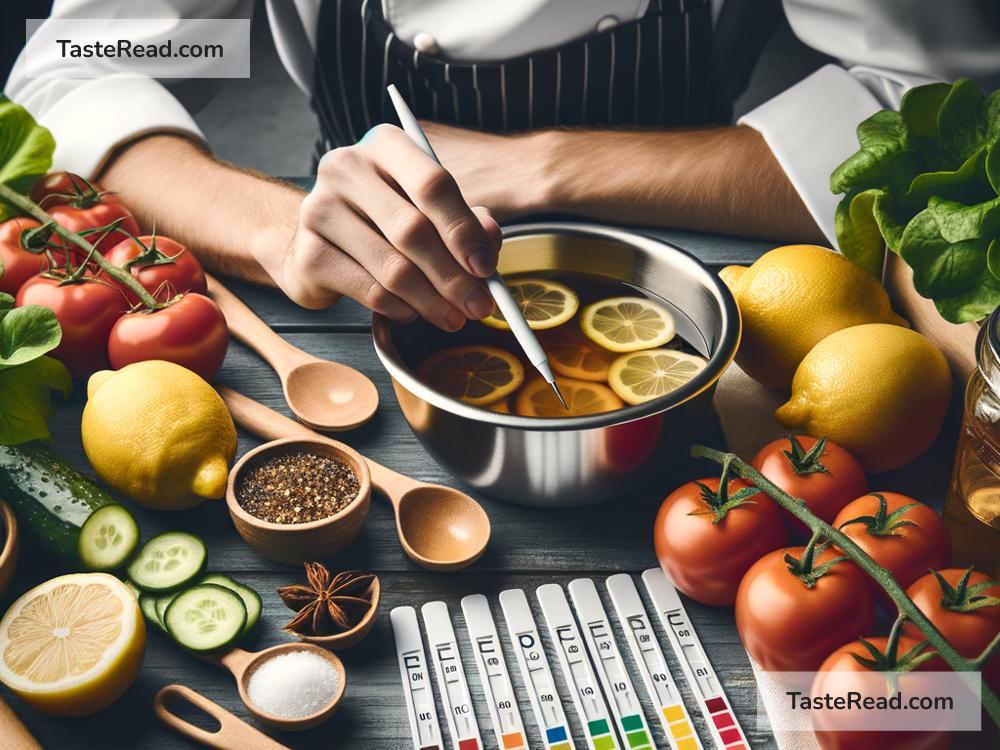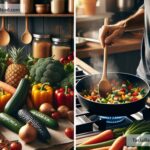How pH Levels Affect Cooking and Food Preservation
When we think about cooking and food preservation, we often focus on recipes, cooking techniques, or storage methods. But there’s a hidden hero that plays a big role in the taste, texture, and shelf life of our food: pH levels. Although it might sound like a term from a science class, pH levels are simple to understand and essential in the kitchen.
Let’s dive into what pH levels are, how they affect cooking, and why they’re important for food preservation. All in simple English—no science degree required!
What Is pH?
To start, let’s explain what pH is. The term “pH” is a measure of how acidic or alkaline (basic) something is. It’s rated on a scale from 0 to 14:
- Acidic foods have a pH level below 7. Examples include lemons, vinegar, and tomatoes.
- Alkaline foods have a pH level above 7. Examples include baking soda, spinach, and cucumbers.
- Neutral foods sit at a pH level of 7. Water is the best-known example.
The lower the pH number, the more acidic the food. The higher the number, the more alkaline.
Why Do pH Levels Matter in Cooking?
pH levels aren’t just science mumbo-jumbo—they’re the secret reason why certain foods taste, look, and behave the way they do in the kitchen. Here are a few ways pH levels affect cooking:
1. Flavor
Acidity plays a huge role in flavor. Tangy foods like lemons and vinegar owe their bold taste to their low pH levels. Alkaline ingredients, such as baking soda, have a subtler taste but can tone down acidity in recipes. Knowing the pH of your ingredients can help you balance flavors in a dish.
For example, adding a splash of lemon or vinegar to a bland soup can wake up its flavors, while a pinch of baking soda can temper the sharp tang in overly acidic dishes.
2. Texture
The pH level often changes how food feels and looks. Take eggs as an example: The proteins in egg whites firm up faster in an acidic environment. That’s why some recipes, like soufflés or meringues, call for cream of tartar (an acidic ingredient).
Similarly, when baking, acidic ingredients like buttermilk or yogurt can make cakes moist and tender. Alkaline ingredients, such as baking soda, allow batters to rise and create fluffy textures.
3. Color
pH levels can change the color of certain foods! For instance, red cabbage acts like a natural pH indicator. When cooked with acidic ingredients like lemon juice or vinegar, it turns pink. In alkaline environments, it becomes bluish-green.
Another common example is fruit. Acidic environments help fresh fruits retain their bright colors, while removing acidity (too much baking soda, for instance) can dull them.
4. Cooking Meat
Acidic marinades, like those made with vinegar or citrus juice, help tenderize tough cuts of meat. This happens because the acidity breaks down proteins in the meat, making it softer and juicier. If you’ve ever made a flavorful steak with a tangy marinade, thank pH levels for the result!
pH in Food Preservation
Preserving food is all about keeping it safe and flavorful for longer. Here’s where pH levels become vital:
1. Preventing Spoilage
Microbes like bacteria and mold thrive in neutral and slightly alkaline environments. However, they struggle to grow in highly acidic conditions. That’s why foods like pickles, jam, and fermented products often have a low pH—they’re less likely to spoil.
For example, in pickling, vinegar (which is acidic) creates an environment unfriendly to bacteria, keeping cucumbers crunchy and safe to eat for months.
2. Canning
When canning at home, understanding pH levels is extremely important for safety. Low-acid foods like green beans or potatoes must be pressure-canned to kill dangerous bacteria. High-acid foods like tomatoes or fruits, on the other hand, can be safely preserved by boiling alone.
3. Fermentation
Fermentation uses pH to preserve food and create unique flavors. As foods like cabbage (for sauerkraut) or milk (for yogurt) ferment, their pH drops. The increased acidity helps stop harmful microbes from growing while allowing healthy bacteria, like lactobacillus, to thrive. This process adds the tangy flavor we love in many fermented products.
4. Freezing and Storage
Even when freezing food, pH levels matter. For example, blanching vegetables (briefly boiling them in acidic water) can preserve their color and texture in cold storage. Acidic environments also prevent browning in fruits like apples and avocados when stored.
Practical Tips for Using pH Levels in the Kitchen
Cooking and preserving food doesn’t need to feel like a science experiment! Here are a few easy tips to use pH levels to your advantage:
- When balancing flavors, think of acidic and alkaline ingredients as “taste buddies.” If a dish is too sour, add something neutral like cream or a dash of baking soda.
- Use acidic marinades for meats or fish to keep them tender and flavorful.
- Consider pH when baking: Acidic ingredients like lemon juice pair well with baking soda because they work together to create air bubbles and make cakes rise.
- Learn to pickle and ferment—the acidity keeps your creations safe and delicious for months.
Conclusion
pH levels are an invisible yet powerful force in cooking and food preservation. They influence flavor, texture, color, and safety, making them a crucial element in every chef’s toolkit. Whether you’re whipping up a fluffy cake, tenderizing meat, or preserving vegetables for winter, understanding acidity and alkalinity can take your kitchen skills to the next level.
So, the next time you sprinkle lemon juice over your salad or stir baking soda into your cookie dough, remember: You’re harnessing the science of pH to create culinary magic!


